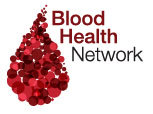2017 Annual Meeting Abstract Winners - Third PlaceNationwide Trends in Blood Product Utilization by Major Procedural Categories: Evidence of Effectiveness of Blood Management Programs Across The NationAuthors: R Goel, MD, MPH1, 2, M Chappidi, MD, MPH3, E Patel, MPH3, SM Frank, MD4, PM Ness, MD3, MM Cushing, MD1, AA. R. Tobian, MD, PhD3 1New York-Presbyterian Hospital, Weill Cornell Medical College, Department of Pathology, New York, New York, United States; 2New York-Presbyterian Hospital, Weill Cornell Medical College, Division of Pediatric Hematology/Oncology, New York, New York, United States; 3Johns Hopkins Hospital, Department of Pathology, Baltimore, Maryland, United States; 4Johns Hopkins Hospital, Department of Anesthesiology and Critical Care Medicine, Baltimore, Maryland, United States Introduction Patient blood management (PBM) programs are expanding across the United States. Multiple studies have shown effectiveness of PBM initiatives at individual hospital/center level. Nationwide trends in blood utilization in hospitalized patients over past 20 years have been evaluated recently (Goel, Tobian et al, AABB 2016, PBM Session) and reported a significant downward trend in blood product utilization from 2011 onward. This study aims to assess the longitudinal change in blood product utilization stratified by major procedural categories and analyze the changes in blood usage for elective versus urgent/emergent procedures at a national level. Methods This study utilized the Nationwide Inpatient Sample database for a trend analysis of inpatient blood product utilization associated with procedures from 2011-2014. Using a stratified probability sample of 20% of hospitalizations, sampling weights and survey methodology were applied to generate nationally representative estimates. Results From 2011 to 2014, there was a 6.5%/year un-adjusted decrease in the number of hospitalizations with RBC transfusions (from 2,515,500 to 2,026,651 hospitalizations), 5.6%/year un-adjusted decrease in hospitalizations with plasma transfusions (370,142 to 307,435) and a smaller un-adjusted decrease of 1.7%/year in hospitalizations with platelet transfusions (262,855 to 248,905). Table-1a lists the changes in unweighted estimates for number (%) of hospitalizations utilizing blood products (total and stratified by medical speciality type). Ranking the decrease in blood utilization by procedural types, orthopedic procedures had the highest percentage decrease in utilization for RBC (38.4% decrease) followed by cardiac (19.7%), head and neck/ENT (16.2%) and urologic (13.3%) procedures (Table-1b). Of note, orthopedic procedures were the only procedure type where a significant decrease was seen in all blood product types (RBC, plasma and platelet usage) (p<0.001). Heme/Onc/BMT was the only procedure category with a reported increase in blood product usage. In sub-group analysis, assessing RBC utilization by procedures being elective versus urgent/emergent, significantly higher decrease in blood product use was seen for elective procedures than urgent/emergent ones (51.1% absolute decrease for elective orthopedic procedures versus 24.2% for urgent/emergent procedures). Discussion These nationwide trends in blood product utilization for hospitalized patients undergoing operative procedures show a statistically significant decrease in overall RBC and plasma transfusions from 2011-2014, likely reflecting a contribution from PBM initiatives. The maximum percentage decrease is seen in elective and orthopedic procedures. An increase in blood utilization was only seen for hematology/oncology patients. No significant decrease in platelet transfusions are seen for any medical specialties, with the exception of orthopedic procedures. |



